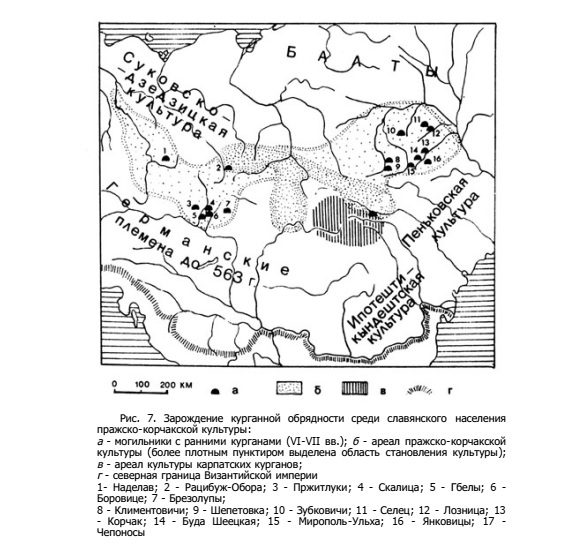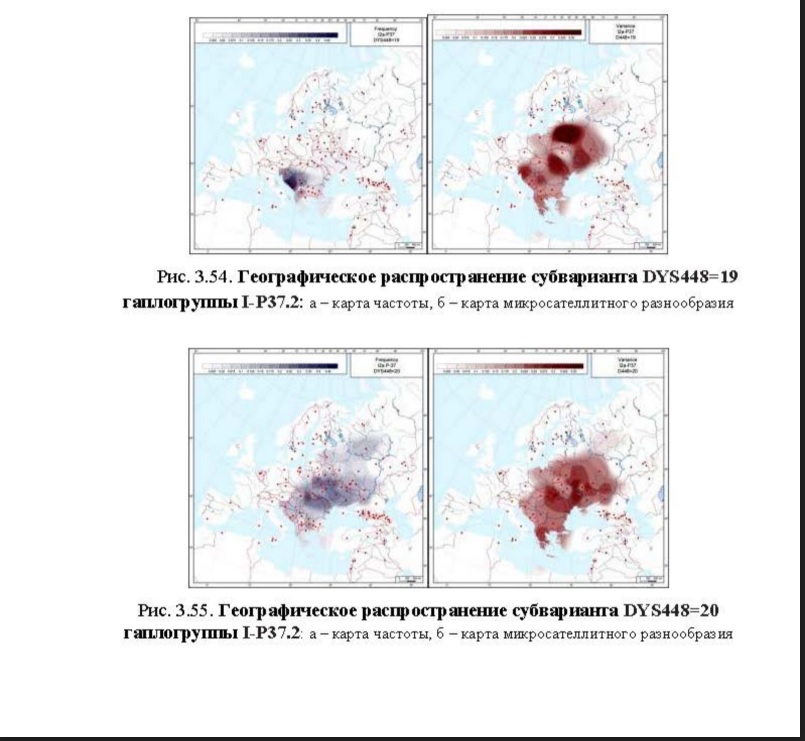A diversity of S17250 in Western Ukraine and its spreading show a high correlation with the expansion of Slavs from Prague Korchak culture. There are at least 50 Medieval Slavic tribes that could be connected to this culture.

Slavs from this culture from Western Ukraine migrated towards Balkan using routes of outer Carpathians, to East and Central Balkan via Moldova and Wallachia down to Greece, and to West Balkan via South Poland Slovakia and Western Pannonia down to the Adriatic Sea.
It is not clear what were ratios of R1a (especially Z280) and I-CTS10228 (South/North) among tribes from Korchak area. We should wait for more results to be able to identify it, anyway it seems that group who travelled Eastward to Central Balkan had a higher ratio of Dinaric South than Dinaric North; while the group from Slovakia, South Poland and West Balkan and West Pannonia had more Dinaric North . This conclusion is based on the current situation; it does not mean that 1500 years ago we had exactly the same situation, some subclades can have a higher rate of expansion than others.
Primarily, here I think on expansion on I-PH908 in Central and Western Balkan at a much higher rate than Dinaric North and R1a subclades. There are also similar examples in other HG’s as well, but more locally (do not cover such a big territory).
Medieval shepherds groups called Vlach are phenomena that appeared in late middle age, and it is not clear if they and how much are connected with Pre-Slavic population. Some authors consider them non-Slavic mostly because their main occupation was transhumance which was not common for the rest of the Slavs who were mostly agricultural society.
https://en.wikipedia.org/wiki/Transhumance and some Romance name of their leaders and katuns.
While other authors think, they were Slavic or a mix of Slavic and Non-Slavic population. Nothing is clear about the area of their origin or language they spoke(probably Slavic, some think they were bilingual).
There is no other HG in Balkans that match described dispersion and migrations of Medieval Vlach as I-PH908 does.
Western Bulgaria, Western Wallachia, East Serbia, Dinaric Alps, rest of Bosnia and Croatia. All regions are characterized by dominance of I-PH908 or DYS448=19, and all are common for shepherd groups mentioned in historical sources.
Historical sources have plenty of references that mentioned Vlach tribes in Dinaric Alps, I would mention some of them which first come to my mind: Ozrinitsi, Niksitsi, Pilatovtsi, Zubtsi, Burmazi, Morlaks, Bunjevtsi, Ridjani, Hrabreni etc. As I know their descendant have been tested as I-PH908.
For example subbranch of I-PH908 with a distinctive value DYS19=14 made up about 10% of all I-PH908 results from Croatia, Serbia, Montenegro, in Croatian part of Hercegovina probably even more, according to STR calculations and two Big Y results tested people on Western Balkan have TMRCA about 1000 years ago. Haplotypes with this values DYS19=14 and DYS448=19 are also observed in Macedonia, Greek Macedonia, Bulgaria, Romania, North Moldova and Poland (Northeast and Souteast) at lower frequencies. Other example is DYS448=18 that made up about 5-6% of 404 tested people from Montenegro in a scientific study or 25% of Dinaric south, results belong to Ozrinitsi cluster with a known common ancestor in late middle ages. There will be more such examples as we get more results.
Aren’t this examples of a recent expansion of shepherd tribes?
I have not invented Medieval Vlach expansion in Dinaric Alps, there are plenty of text about it on internet and scientific researches, unfortunately without the answer about the origin of the groups or if they were locals there or penetrate the area after expansion of Medieval Bosnian state. Here is one paper about it:
https://hrcak.srce.hr/81281
It is a good question how and when I-PH908 bearers (or only part of them) acquired Transhumance as the main occupation, whether or Balkans or somewhere else. For Slavs it is uncommon, most of Slavs were an agricultural society with only domestic animals around their homes, except the group of the Slavs that lived in Carpathian region of Western Ukraine. From that region, most of them moved to Balkans during great Migration.
There are also many theories about the origin of Croats, the time of arrival on Balkan and area where they lived before migrations. Before Dalmatia, some historians think they were in Carantania or Avar Khaganate, other place them in North Bohemia and Southern Poland as a West Slavic Tribe. While many of Russian historians consider them as an East Slavic tribe that originated in Prycarpathia.
As I remember Russian archaeologists link expansion of White Croats with “The Carpathian Tumuli culture”
https://en.wikipedia.org/wiki/Carpathian_Tumuli_culture and appearance of burials with Kurgans on West Slavic territories:

Non-Russian archaeologist do not agree and link this culture to Dacian influence on Early Slavs.
As for everything else, modern history and archaeology give us many different answers on questions about the origin of the Croats. Also, I have to mention the opinion of famous American historian John V. A. Fine that Croats were just a small ruling elite and did not leave large genetic influence:
https://www.amazon.com/When-Ethnicity-Matter-Balkans-Pre-Nationalist/dp/047211414X
If White Croats had I-S17250 they might spread only a small part of it or a part of I-PH908, most of tested I-S17250 probably have no any connection with White Croats but very likely to a larger group of Slavs bearers of Prague-Korchak culture, in some sources called Sclavini.
Anyway, if someone has a good map of “Croat” toponyms (or just a list) in Slovenia, Austria, CZ, Germany, Hungary, Poland, Slovakia, Bulgaria, Macedonia, Greece etc. it would be nice to post it on the Forum.
It is not the question only about Croats, it is same with origins of Medieval Serbs and Bulgarians and their real genetic influence. We know that they were three the most important Slavic states in the past, but also know that they were three tribes among at least 30-40 other Slavic plus non-Slavic tribes that were assimilated by them.
Only Archeogenetics/Ancient DNA can give us some (partial) answers, before it we can only guess Y-dna.
Also, I have to mention that there were several penetrations of Balkan from North Carpathians and Western Ukraine before Slavs and some sublclades might came a bit earlier not only A2512, e.g.
- Costoboci https://en.wikipedia.org/wiki/Costoboci, they reached Greece in a large number and might be linked to Y18331/A2512, or maybe Goths who also were in South Greece. Only what is missed for such links is Y18331/A2512 in North Carpathians or somewhere in Ukraine. Except for a younger branch of A2512 among Chuvash, no one else on the North was confirmed to belong to this branch. So, it might came to Greece even from Pannonia. Someone who knows the history of Peloponnese and surrounding areas might suggest possible migrations between 5 B.C – 5. A.C.
- Carpi https://en.wikipedia.org/wiki/Carpi_(people)
- Bastarnae, some of them were settled in Trakia and Dardania https://en.wikipedia.org/wiki/Bastarnae
- Huns, among them, were many other subjugated tribes https://en.wikipedia.org/wiki/Huns
- And others
There are many people on Forums who think that part of I-PH908 and I-Z17855 came with some Pre-Slavic migrations. Of course, there is no right answer now so we must respect and take in consideration every opinion.




